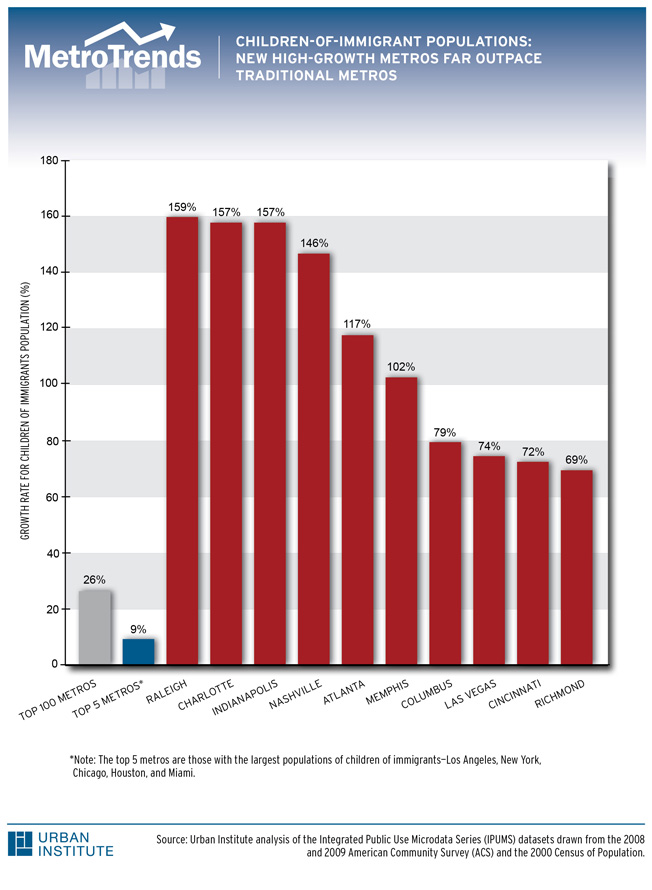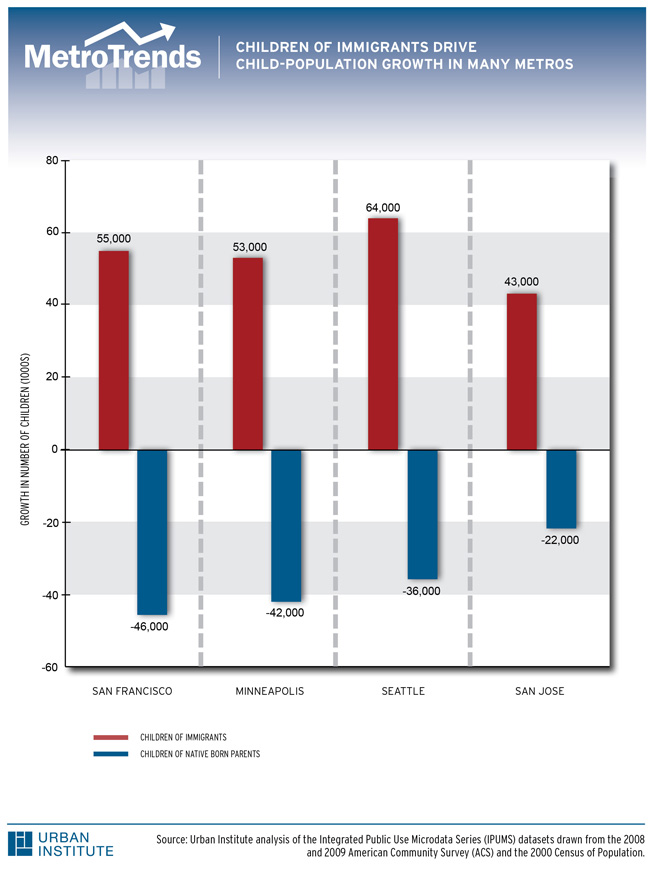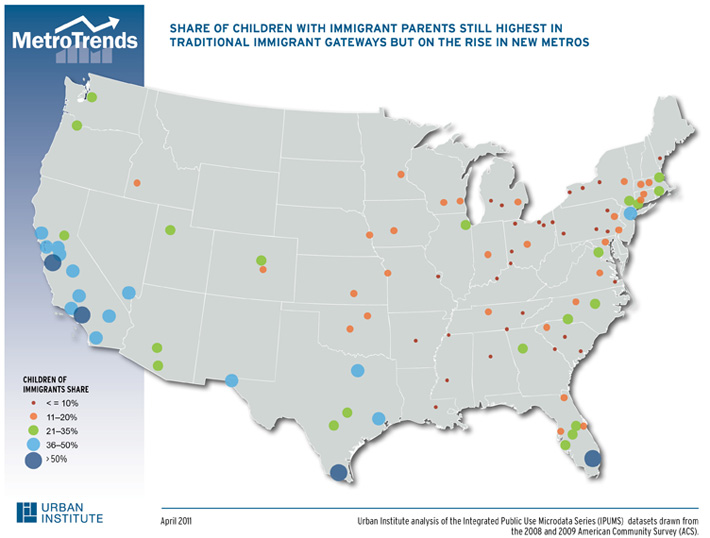
|
|
Children of Immigrants Children of Immigrants Keep Metros YoungDue to increasing immigration in the last two decades, the number of children living in immigrant families is also on the rise. In 2008-09, 16.8 million children in the United States had at least one foreign-born parent.i The vast majority of these children (84 percent) - an estimated 14.1 million - live in the 100 largest metropolitan areas, up from 11.2 million in 2000.ii While children of immigrants remain highly concentrated in the traditional gateway metros, many Southeastern and Midwestern areas have experienced large increases in their foreign-born populations in the last two decades. In 2000, five metros - Los Angeles, New York, Chicago, Houston, and Miami - accounted for almost half (5.4 million, 48 percent) of all children of immigrants living in the 100 largest metros. Almost a decade later, as immigrants spread to non-traditional destinations, these five metros' combined share declined to 42 percent, despite the fact that they remained the top 5 metros for this population and saw the number of children of immigrants in their metros grow to 5.8 million. In fact, the largest growth in the number of children of immigrants between 2000 and 2008-09 occurred in the metropolitan areas of states that had relatively small immigrant populations 20 years ago. These metros saw two- to threefold increases: Raleigh, Charlotte, Indianapolis, Nashville, and Atlanta. To put these numbers in perspective, the 100 largest metros experienced combined growth of 26 percent, while the top 5 metros, saw only a 9 percent increase. Further, the population under 18 years of age would have declined or stagnated if it had not been for children of immigrants. They accounted for all 5 percent of the growth in the child population between 2000 and 2008-09. The number of children of immigrants increased by 26 percent, while the number of children with native-born parents actually declined during this time. Several metros in particular vividly illustrate this trend. Among the 60 metros with at least 30,000 children of immigrants, this segment of the population accounted for more than half of the growth in the child population in 23 metros (e.g., Atlanta, Houston, Nashville, Portland, and Richmond); and for all growth in 12 metros (e.g. Minneapolis, San Francisco, San Jose, and Seattle). In fact, in these 12 metros, the number of children would have declined if it were not for children of immigrants. As a result of the fast growth in the foreign-born population, children of immigrants account for increasing shares of U.S. children. In 2008-09, almost one of every three (29 percent) children in the top 100 metro areas had an immigrant parent. Children of immigrants also represented more than 50 percent of children in four metros (San Jose, Los Angeles, McAllen, and Miami) and relatively high shares in many metros with fast growing immigrant populations like Las Vegas (40 percent), Phoenix (34 percent), Seattle (28 percent), and Tucson (27 percent). Children of immigrants will continue to be an increasing share of U.S. children in metropolitan America, including among the school-age population. The recent slowdown in immigration is unlikely to translate into a slowdown in the rising number of children of immigrants because most of these children are born in the United States. For these children, birth rates and population momentum, and not immigration trends, will likely continue to drive population growth. Children of immigrants are likely to continue to have an increasing impact on American schools, social programs, economy, and society in the future. i Steven Ruggles, J. Trent Alexander, Katie Genadek, Ronald Goeken, Matthew B. Schroeder, and Matthew Sobek. Integrated Public Use Microdata Series: Version 5.0 [Machine-readable database]. Minneapolis: University of Minnesota, 2010. |
Experts Feedback
Send us your comments to help further the discussion. Share
Commentaries
|








 Karina Fortuny
Karina Fortuny